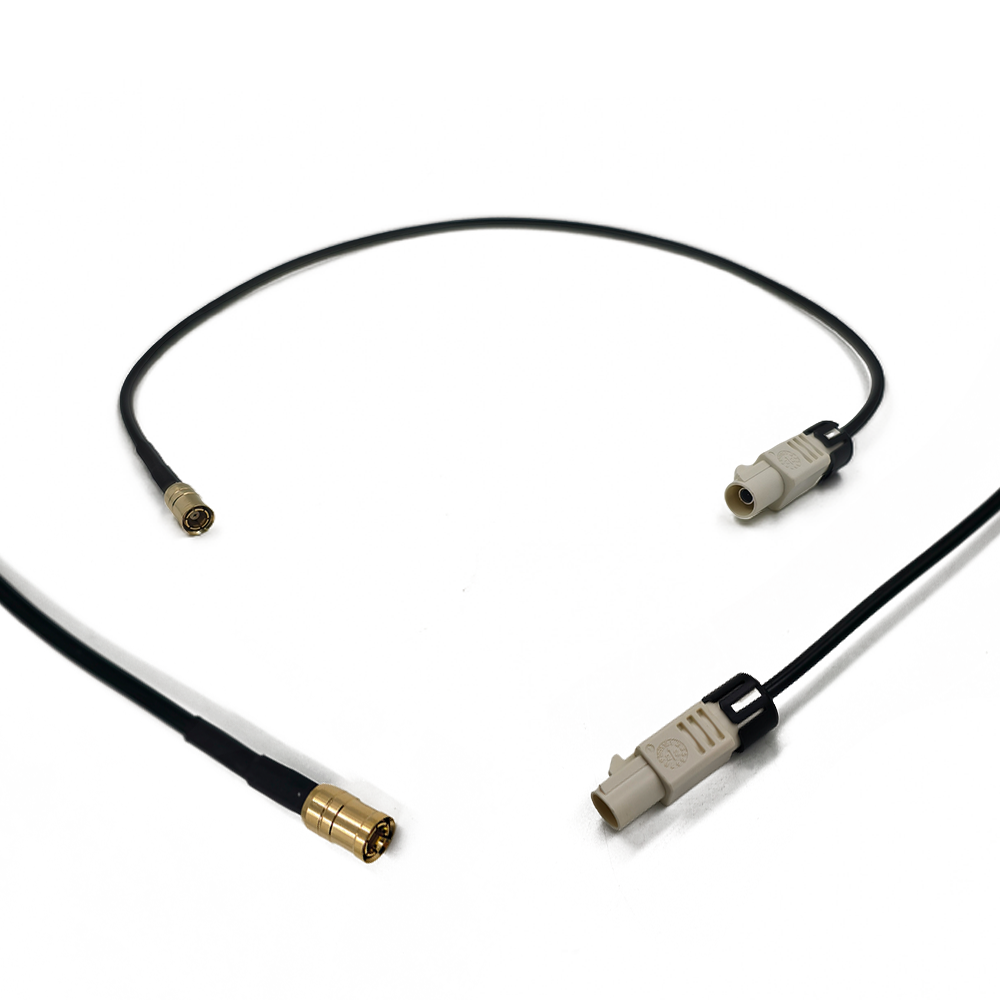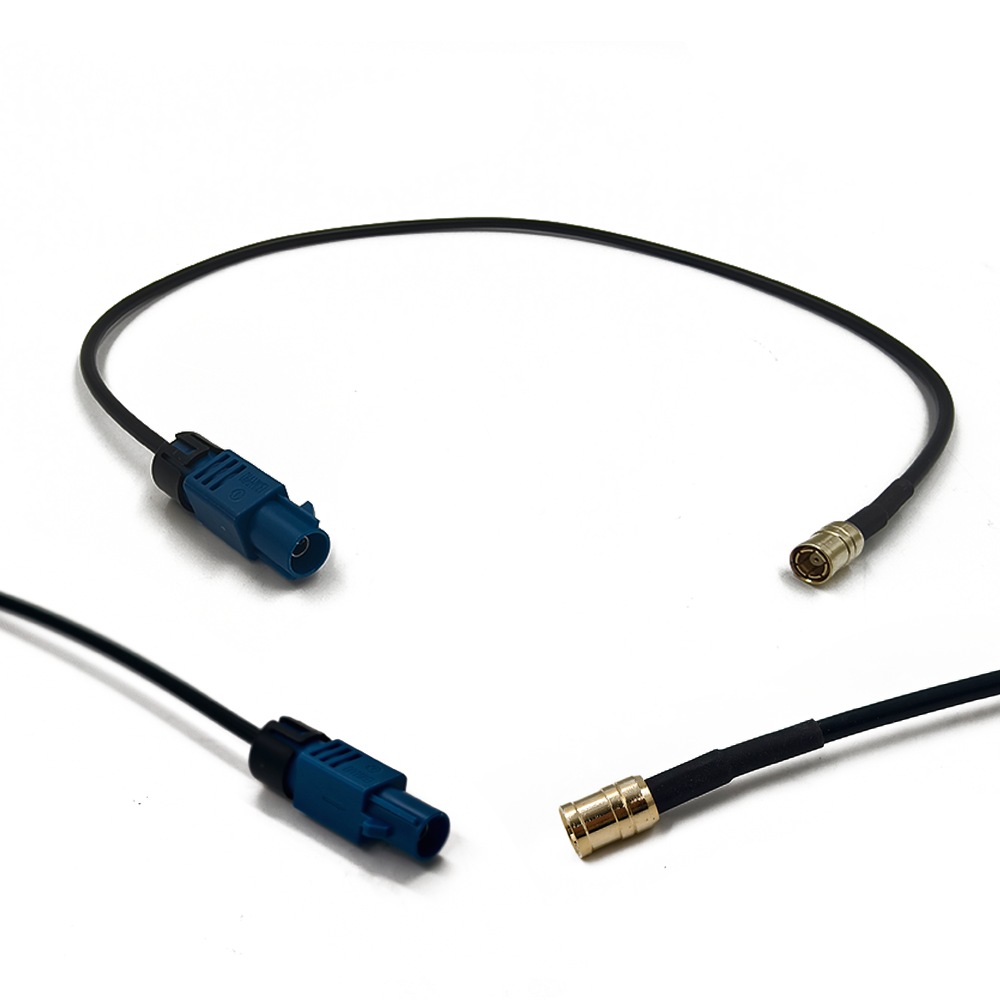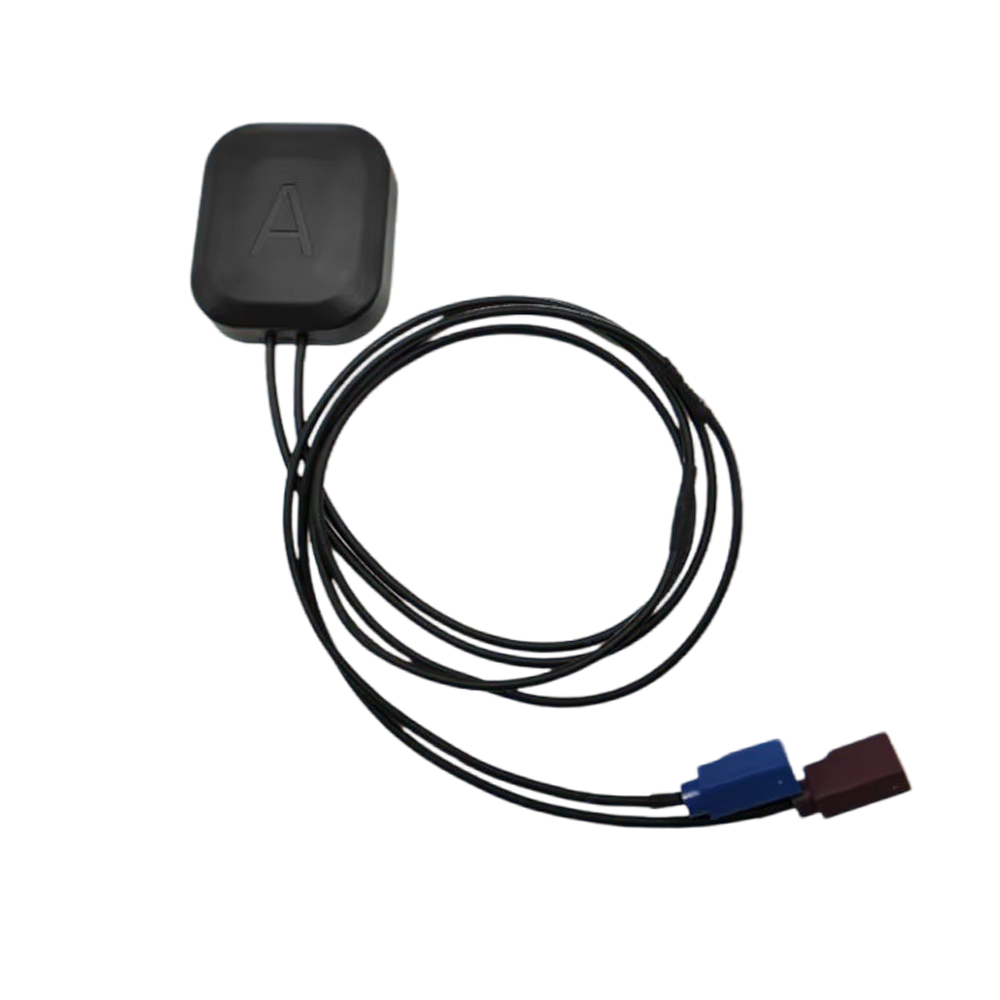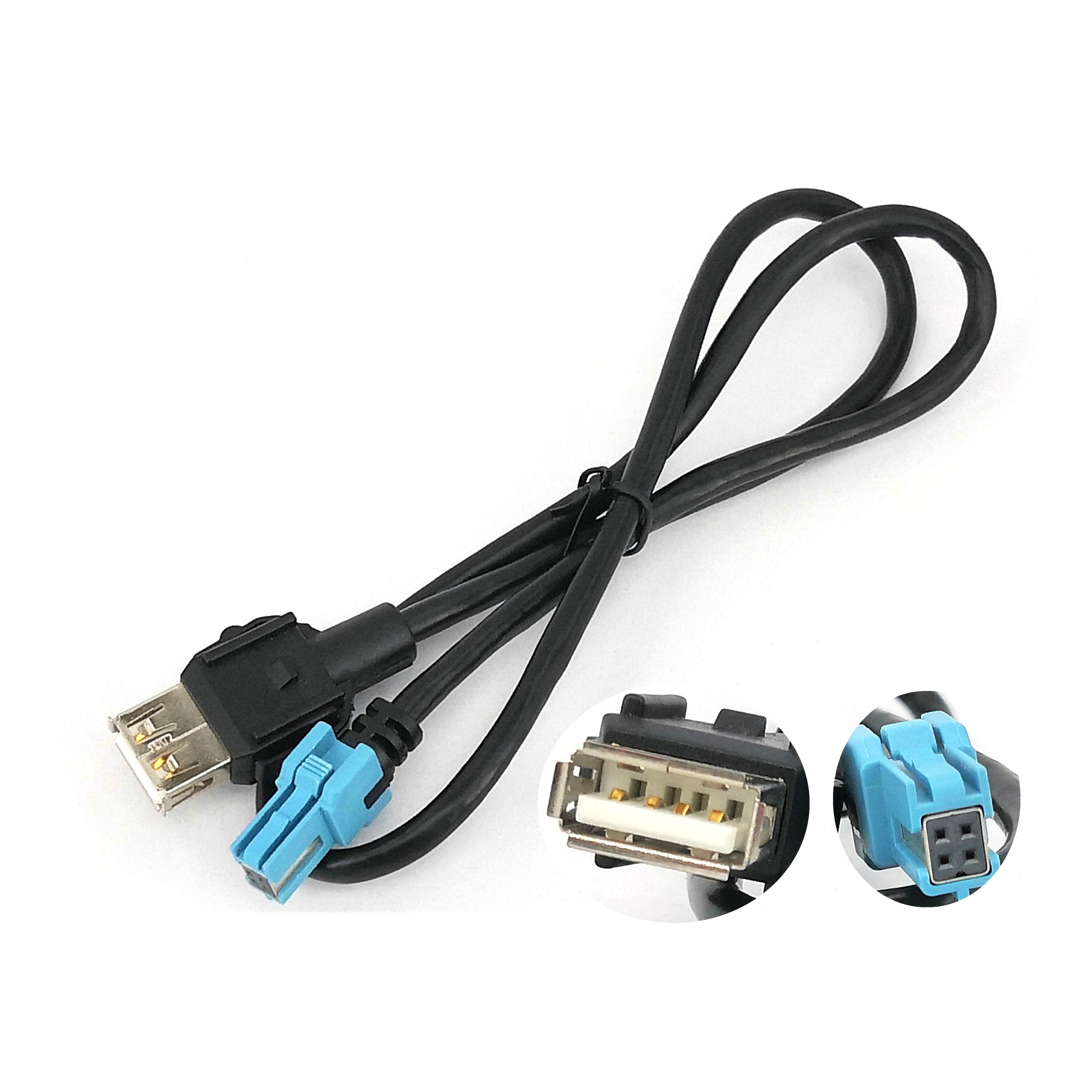GPS, or the Global Positioning System, relies on a constellation of satellites orbiting the Earth to transmit signals that carry information about their position and time. These signals are received by GPS antennas, which convert the electromagnetic waves into electrical signals for further processing by GPS receivers. However, in outdoor settings, such as during heavy rain, near bodies of water, or in high - humidity environments, standard GPS antennas may face issues like signal degradation due to water ingress, corrosion of internal components, and interference caused by moisture - related electrical effects. This is where FAKRA GPS waterproof antennas come into play.
The waterproofing feature of these antennas is not just an added convenience; it is a necessity for ensuring the longevity and consistent performance of the GPS system. Whether it is a vehicle navigating through a storm, a marine vessel cruising in rough seas, or a rugged outdoor tracking device exposed to the elements, the FAKRA GPS waterproof antenna safeguards the integrity of the GPS signal reception. By preventing water from entering the antenna and its connected components, it reduces the risk of damage, thereby enhancing the reliability of the positioning system.
Moreover, the FAKRA connector's design facilitates easy and secure connection to GPS receivers and other related equipment. Its standardized pin configurations and locking mechanisms ensure a stable connection, minimizing the chances of signal loss due to loose connections. This combination of waterproofing and reliable connectivity makes the FAKRA GPS waterproof antenna a preferred choice for a wide range of industries and applications that require accurate and uninterrupted GPS positioning in challenging environments.
The design and construction of a FAKRA GPS waterproof antenna involve a meticulous approach to balance functionality, durability, and compatibility. Every aspect of the antenna, from the choice of materials to the sealing mechanisms, is carefully engineered to meet the stringent requirements of waterproofing while maintaining optimal GPS signal reception performance.
Antenna Element Design
The core of the FAKRA GPS waterproof antenna is the antenna element, which is responsible for capturing the weak GPS signals transmitted by satellites. Microstrip antenna designs are commonly employed due to their compact size, low profile, and efficiency in the GPS frequency bands, primarily the L1 band at 1.575 GHz. A microstrip antenna typically consists of a metallic patch, usually made of copper or gold, placed on a dielectric substrate with a ground plane beneath.
For optimal performance, the shape, size, and configuration of the metallic patch are optimized through electromagnetic simulations. These simulations help engineers determine the best design to achieve high gain, which is crucial for effectively capturing weak GPS signals, and good impedance matching to minimize signal reflections. To enhance the antenna's performance in challenging environments, additional features such as parasitic elements or slots may be incorporated into the patch design. These features can help improve the antenna's radiation pattern and reduce interference from nearby sources.
The choice of dielectric substrate is also a critical factor. Substrates with stable electrical properties over a wide range of temperatures, humidity levels, and frequencies are preferred. Ceramic - based substrates are popular due to their high dielectric constant, which enables miniaturization, and their excellent thermal and mechanical stability. However, other materials like Rogers RT/duroid series may be selected based on specific performance requirements and cost considerations.
FAKRA Connector Design
The FAKRA connector is a key component of the antenna, providing a reliable connection between the antenna and the GPS receiver or other associated equipment. FAKRA connectors are known for their compact size, which makes them suitable for applications where space is limited, such as in automotive interiors or small - form - factor outdoor devices.
These connectors come in various types, each with a specific color - coding system to indicate its impedance and frequency range. For GPS applications, the most commonly used FAKRA connectors are those designed for 50 - ohm impedance and are capable of handling the frequencies relevant to GPS signals. The connector features a bayonet - style locking mechanism that ensures a secure connection, preventing accidental disconnection even in environments with vibrations or movement.
The pin configuration of the FAKRA connector is standardized, allowing for easy integration with a wide range of GPS receivers and other devices. The connector's design also includes shielding to minimize electromagnetic interference, protecting the integrity of the GPS signals during transmission between the antenna and the receiver.
Waterproofing Design
The waterproofing of the FAKRA GPS antenna is achieved through a combination of sealing mechanisms and the use of suitable materials. The enclosure of the antenna is typically made of a durable material, such as high - strength engineering plastics or metal alloys. These materials are chosen for their resistance to water, UV radiation, and other environmental factors.
To prevent water ingress, the antenna is sealed at all potential entry points, including the connection between the antenna element and the enclosure, and the interface with the FAKRA connector. Rubber or silicone gaskets are commonly used to create a watertight seal at these joints. These gaskets are compressed when the components are assembled, filling any gaps and preventing water from seeping in.
In addition, the FAKRA connector itself may have waterproofing features. Some FAKRA connectors are designed with rubber boots or covers that provide an additional layer of protection against water and dust. These covers are often made of a flexible, waterproof material that can be easily installed and removed, allowing for maintenance or replacement of the connector if necessary.
Assembly and Integration
The assembly of the FAKRA GPS waterproof antenna involves carefully combining the antenna element, the FAKRA connector, and the waterproof enclosure. During the assembly process, attention is paid to ensuring that all components are properly aligned and that the sealing mechanisms are intact.
The antenna is then integrated with the GPS receiver or other equipment using the FAKRA connector. The standardized design of the FAKRA connector ensures that the integration process is straightforward and that the antenna can be easily connected to a variety of devices. The overall assembly is tested rigorously to ensure that it meets the waterproofing standards, such as the Ingress Protection (IP) ratings, which specify the level of protection against dust and water.
The working principles of a FAKRA GPS waterproof antenna revolve around the processes of signal reception, transmission, and the role of the FAKRA connector in ensuring a reliable connection for accurate GPS positioning.
Signal Reception
The operation of the FAKRA GPS waterproof antenna begins with the antenna element capturing the weak radio - frequency signals transmitted by GPS satellites. These signals, which carry information about the satellite's position and time, travel through the Earth's atmosphere before reaching the antenna. The antenna element, designed to resonate at the GPS frequencies, efficiently couples with the incoming signals and converts the electromagnetic energy of the GPS signals into electrical signals.
When the frequency of the incoming GPS signals matches the resonant frequency of the antenna element, a resonance effect occurs. This resonance enhances the antenna's ability to absorb the energy of the signals, generating electrical currents that represent the received GPS signals. However, these initial signals are often weak and may be affected by various factors, such as ionospheric delays, tropospheric delays, and multipath interference, which can distort the signals and reduce the accuracy of the positioning calculations.
Signal Processing and Transmission
The weak electrical signals received by the antenna element are then transmitted to the GPS receiver through the FAKRA connector. Before transmission, the signals may pass through a series of components within the antenna, such as a low - noise amplifier (LNA) and filters.
The LNA boosts the weak GPS signals to a level suitable for further processing while minimizing the addition of noise. This is essential because the signals received from the satellites are extremely weak, and any additional noise could significantly degrade the accuracy of the positioning calculations performed by the GPS receiver. After amplification, the signals pass through filters, including band - pass filters, which allow only the frequencies within the GPS bands to pass through while rejecting unwanted frequencies and interference from other radio - frequency sources.
The FAKRA connector plays a crucial role in transmitting the processed signals from the antenna to the GPS receiver. Its secure connection and shielding properties ensure that the signals are transmitted without significant loss or interference. The standardized pin configuration of the FAKRA connector allows for a consistent and reliable connection, enabling the GPS receiver to receive the signals accurately for further processing.
Position Calculation
Once the GPS receiver receives the signals from the FAKRA GPS waterproof antenna, it begins the process of position calculation. The receiver analyzes the time it takes for the signals to travel from the satellites to the antenna. By knowing the positions of the satellites (which are continuously transmitted in the GPS signals) and the time delays, the receiver can use the principle of trilateration to calculate the distance between the antenna (and thus the device it is attached to) and each satellite.
Using the distances to multiple satellites, the GPS receiver can determine the precise position of the antenna on Earth's surface, along with other information such as altitude, speed, and time. The accurate and clean signals provided by the FAKRA GPS waterproof antenna, combined with the processing capabilities of the GPS receiver, enable the device to perform location - based functions with high precision, even in challenging outdoor environments.
-
Advantages
One of the most significant advantages of FAKRA GPS waterproof antennas is their durability in harsh environments. The waterproofing features protect the internal components of the antenna from water, dust, and other contaminants, reducing the risk of damage and extending the lifespan of the antenna. This makes them ideal for applications where the antenna is exposed to the elements, such as in automotive, marine, and outdoor tracking devices.
The FAKRA connector's design offers several benefits as well. Its compact size and standardized pin configuration make it easy to integrate with a wide range of GPS receivers and other equipment. The bayonet - style locking mechanism ensures a secure connection, minimizing the chances of signal loss due to loose connections. This reliability is crucial for maintaining accurate GPS positioning, especially in applications where vibrations or movement are common, such as in vehicles or on moving machinery.
FAKRA GPS waterproof antennas also provide good performance in terms of signal reception. The optimized design of the antenna element, combined with the use of high - quality materials, enables efficient capture of weak GPS signals. The inclusion of components like low - noise amplifiers and filters helps to enhance the signal quality, reducing interference and improving the accuracy of the positioning calculations.
Challenges
Despite their numerous advantages, FAKRA GPS waterproof antennas face several challenges. One of the primary challenges is the cost. The design and construction of these antennas, which involve advanced materials for waterproofing, precision - engineered FAKRA connectors, and high - performance antenna elements, can result in a relatively high production cost. This cost may be a barrier for some applications, especially those with budget constraints.
Another challenge is related to maintenance. While the waterproofing features are designed to protect the antenna from environmental damage, in the event of a failure or the need for repair, accessing the internal components can be more difficult compared to non - waterproof antennas. The sealing mechanisms and the enclosure need to be carefully disassembled and reassembled to avoid compromising the waterproofing integrity, which may require specialized tools and skills.
Compatibility can also be an issue in some cases. Although the FAKRA connector has a standardized design, there are different types of FAKRA connectors with varying impedance and frequency capabilities. Ensuring compatibility between the antenna, the FAKRA connector, and the GPS receiver or other equipment requires careful selection and matching of components, which can add complexity to the system integration process.
-
Applications
FAKRA GPS waterproof antennas have a wide range of applications across various industries. In the automotive industry, they are used for in - vehicle navigation systems, vehicle tracking, and autonomous driving technologies. The waterproofing feature ensures that the antennas can withstand exposure to rain, snow, and road spray, while the FAKRA connector provides a reliable connection within the vehicle's complex electrical system.
In the marine industry, these antennas are essential for ship navigation, marine tracking, and safety applications. They can operate effectively in the harsh marine environment, where exposure to saltwater, high humidity, and strong winds is common. The accurate GPS positioning provided by these antennas helps vessels navigate safely, avoid hazards, and follow precise routes.
Outdoor asset tracking is another important application area. Devices used to track the location of assets such as containers, equipment, and vehicles in outdoor settings rely on FAKRA GPS waterproof antennas. Whether it is in a construction site, a logistics yard, or a remote outdoor area, these antennas ensure that the tracking devices can maintain accurate positioning even in adverse weather conditions.
Future Trends
Looking ahead, several future trends are expected to shape the development of FAKRA GPS waterproof antennas. One trend is the further improvement of waterproofing technology. New materials and sealing techniques are being explored to enhance the waterproofing performance while reducing the size and weight of the antennas. This will enable the antennas to be used in even more demanding environments and in smaller, more compact devices.
The integration of advanced signal processing technologies is another emerging trend. With the development of artificial intelligence (AI) and machine learning (ML), there is potential to incorporate these algorithms into FAKRA GPS waterproof antennas. AI and ML can be used to optimize the antenna's performance in real - time, adapt to changing environmental conditions, and improve the accuracy of signal reception and positioning calculations.
Advancements in communication technologies, such as 5G and the Internet of Things (IoT), will also impact the design and use of these antennas. As the demand for seamless integration of GPS positioning with other communication and data - collection systems grows, FAKRA GPS waterproof antennas will need to be designed to work in harmony with these new technologies, enabling more intelligent and connected applications.
There is also a trend towards the development of multi - functional antennas. Future FAKRA GPS waterproof antennas may integrate additional functions, such as wireless communication capabilities, sensor integration, or energy harvesting. This integration will reduce the number of antennas required on a device, saving space and potentially reducing costs.
Conclusion
FAKRA GPS waterproof antennas have become essential components for applications that require accurate GPS positioning in challenging outdoor environments. Their combination of reliable waterproofing, the secure connection provided by the FAKRA connector, and good signal reception performance makes them suitable for a wide range of industries, from automotive and marine to outdoor asset tracking.
However, challenges such as cost, maintenance, and compatibility need to be addressed to further promote their widespread adoption. As technology continues to evolve, future trends such as improved waterproofing, integration of advanced signal processing, compatibility with new communication technologies, and the development of multi - functional antennas offer great potential for enhancing the performance and capabilities of FAKRA GPS waterproof antennas. By overcoming these challenges and embracing these trends, these antennas will continue to play a crucial role in enabling accurate and reliable GPS - based applications in the future.




































































 Language
Language
 En
En Cn
Cn Korean
Korean

 Home >
Home > 








 18665803017 (Macro)
18665803017 (Macro)













